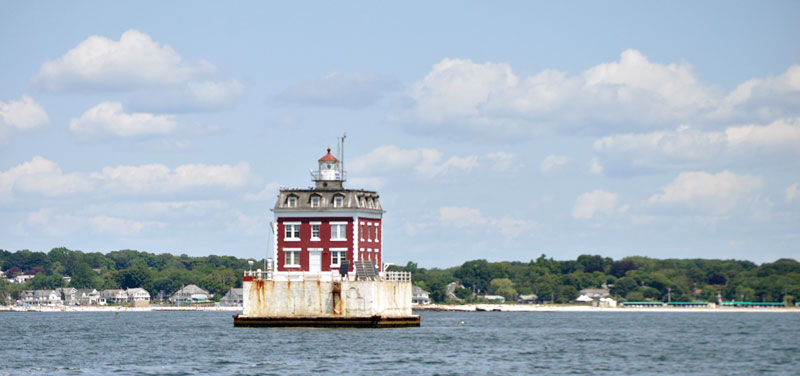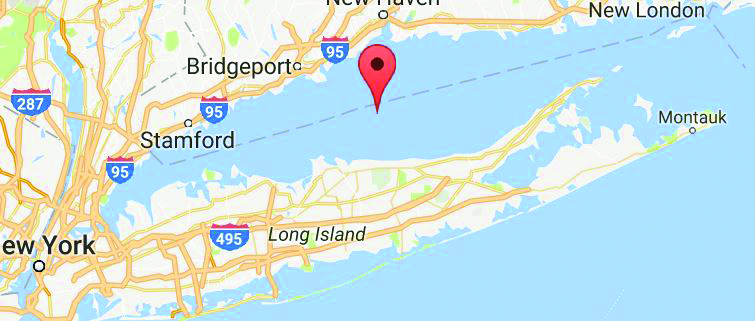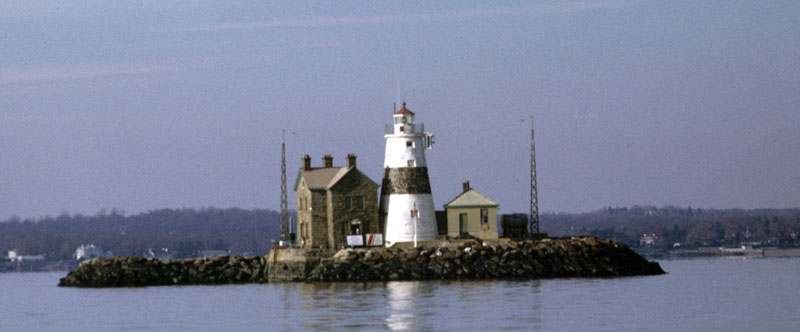Which is the Better Cruising Grounds: The Chesapeake Bay or Long Island Sound?
It was only after more than 30 years of boating on Long Island Sound that I got to see the Chesapeake Bay from the water on my own boat.
My wife and I had been to Annapolis, Baltimore, St Michaels, and other places and seen the water but had never been on it. We’d been to at least 25 United States Sailboat Shows (as in the sailboat show) here and done some of the things tourists always do but hadn’t been on the Bay until we became liveaboards and snowbirds. Now we’ve passed through the Bay southbound and northbound every year for five going on six years. We stop for annual maintenance and the U.S. Sailboat Show in Annapolis and to fly off to work for a couple of weeks. Oh, a little cruising, also.

This is how we compare the two bodies of water.
The Chesapeake Bay is bigger: 200 miles long and about 4479 square miles depending how you’re measuring. Long Island Sound is 110 miles long and about 1300 square miles. One for the Bay.
The Bay is fed by more rivers than the Sound, and the Sound is flushed more by ocean tides and currents so it is not as brown and silty. Which is more polluted can be argued depending on what kind of pollution you are measuring or what you consider pollution, but Long Island Sound appears less polluted. One for Long Island Sound.

The Bay is bigger and therefore has more lighthouses but only the screwpile lights are really great looking. Long Island Sound has more variety of lighthouses, Race Rock, New London Ledge, and Execution Rocks for a few examples, and LI Sound has more ghosts ‘manning’ the lights. Another point for the Sound.
Long Island Sound only has a couple of semi-major shipping ports, so compared to the Bay there are fewer large commercial vessels plying the waters. There is a fair amount of barge traffic but nowhere near the amount in the Bay. Not too many container ships, either. Bay sailors must keep a vigilant watch for all these monsters. Not looking good for the Bay, so far.
How about lobster pots vs. crab pots? The Sound has plenty of these floats, but nowhere are there needed float-free channels. The density is much greater in spots in the Bay. Our first foray entering the Upper Bay from the C&D Canal had us catch a line in the Bay outside the approach to Worton Creek. Not a great introduction. A local out of Annapolis once told us the area was the America’s Sailing Capital, but it was only because you had to sail or you’d catch your prop on a float line. Another point for the Sound. They’re adding up.
Another interesting observation is the number of really expensive homes you can see from the water. There are plenty of fancy homes on the shore in the Chesapeake Bay. Plenty. But really serious money is concentrated on the eastern Connecticut and almost all the New York shorelines. Now one can argue which is a positive or a negative situation. You like a higher concentration of rich people? Or not? Call it a toss-up.

There is plenty of current in the Bay with its tidal range, but Long Island Sound is a tidal estuary with a greater tide range; so we have to deal with more current, stronger current, and way less time with little or no current. It makes you a higher skilled sailor, but that might not be a plus. Finally, another point for your Bay.
Let’s consider the shoreline itself now. Long Island Sound has more rocks. A lot more rocks. The Chesapeake has rocks, of course, but its shoreline is generally much softer. You can (and will) go aground, but it will cause a lot less damage. A lot of areas in the Chesapeake are filling in, but the fill is soft. Usually. Hitting one of our many, many rocky spots will cause way more, perhaps terminal, damage. Looking better Chesapeake Bay.
We’ve been to a number of museums near the shores of the Bay. Maritime museums and those focused on the Bays effect on U.S. history or those that celebrate those who made their living on the waterways have all been pretty good to outstanding. The museum at the U.S. Naval Academy is a must see but… Long Island Sound has the Mystic Seaport Museum, and that’s all it needs. Connecticut has several other very good museums with focuses similar to those on the Bay, but Mystic Seaport Museum is the pre-eminent Maritime/History/Ocean/Preservation/Restoration Museum in the world! Sorry Chesapeake, 10 points to Long Island Sound.
Now let’s talk about the most important consideration, cruising and anchorages. Long Island Sound has nine or 10 excellent anchorages on its south shore on Long Island itself. There are plenty of harbors on the north shore also, but few of those places have roomy places to anchor. There are hundreds of expensive marinas to visit with outstanding facilities but not too many that want to see anchored boats nearby. This is not to say there are no anchorages, especially down the eastern end of the sound.
This is not to say there is no great cruising, no great sailing, but very little compares to the Chesapeake Bay. There are uncountable creeks and coves and rivers that you can sail to and anchor and be almost alone. Or you can dinghy from your anchorage to an interesting little town or village and then the next day sail to another one. And another one and… well you get it. In five years we have barely scratched the surface of all the places we can cruise to and anchor out to visit a different scenic area. We look at the guides and say next year we have to stop here, no there, no I want to go back there—or how about this place? This is real jealousy.
We have to award the Chessie 20 points and declare it the winner. As much as we like Long Island Sound, we have to say the Bay is the better cruising area and hope its many boating residents appreciate the gem it has.
By Mike Camarata




